Primestock TEXEL
Profiting from retail success

Texels add value to Welsh early lambing system
Tech and Texels suit Aberdeenshire flock
Win an electronic lamb weigher with Texel and Bateman


Profiting from retail success

Texels add value to Welsh early lambing system
Tech and Texels suit Aberdeenshire flock
Win an electronic lamb weigher with Texel and Bateman

Texel Sheep Society chief executive John Yates said having viable sheep businesses was critical for rural areas and associated supply businesses to remain viable.
“While the Sustainable Farming Initiative in England, the Sustainable Farming Scheme in Wales and other indirect support and environmental scheme payments can go some way to filling the gap these do come with conditions and, in many cases, ongoing costs, so farmers need to ensure their base enterprises are profitable as standalone businesses.
“Much has been made in recent months of the applicability of various sheep breeds to certain environments and that is to be applauded where it is relevant. However, ultimately, sheep farmers must choose the genetics which offer them the greatest chance of turning a profit without support payments,” he explained
“As a large proportion of the UK sheep industry already knows, Texels are adept at fitting into a myriad of farming systems and environments across the British Isles.
“And, importantly, they command premium prices from all sectors of the industry. Whether sold as prime, store, breeding or cull stock, Texel-sired animals always generate premium prices, helping reduce risk in farming businesses without adding demands to the public purse.”
Such have been the premiums available for Texel cross lambs in recent months that at many live markets Texel lambs have been achieving prices of 25% above market averages.
And, finding the right genetics to earn these premium prices for your flock has never been easier, with a wide range of ways of finding the Texels you need.
Those flock managers looking to find elite genetics should look no further than the Texel Sheep Society’s National Sales, held during late August and early September at Lanark, Worcester, Welshpool and Ballymena, says Mr Yates
“While these sales create headlines for the rams sold between pedigree breeders, they also offer large numbers of high-quality rams suited to commercial flocks at reasonable prices.
“At the 2023 Texel Sheep Society National Sales nearly half of all rams (49.6%) at the Scottish, English and Northern Irish National Sales sold at prices of less than 1000gns.
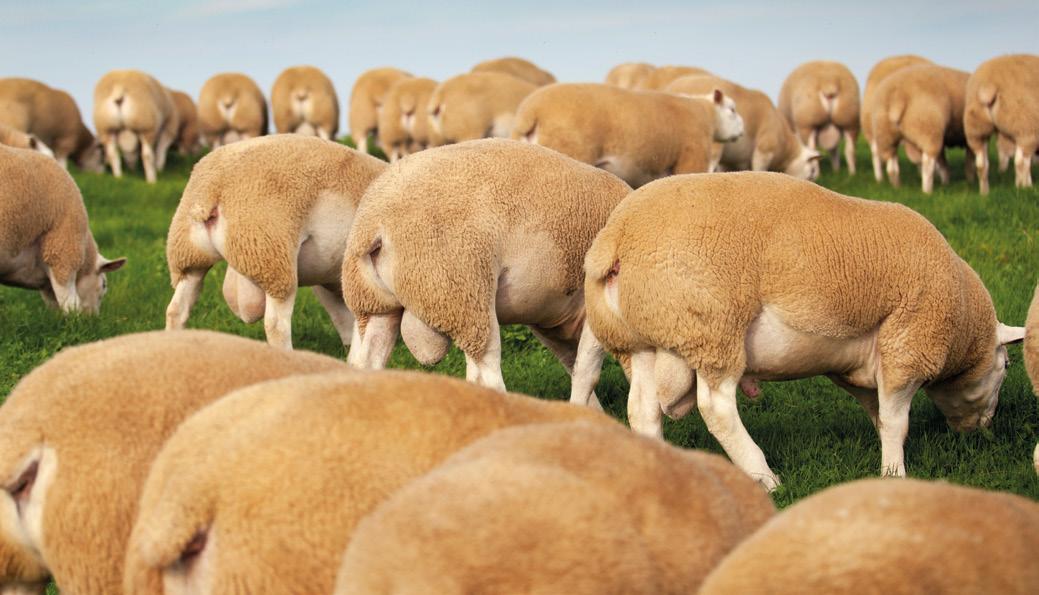

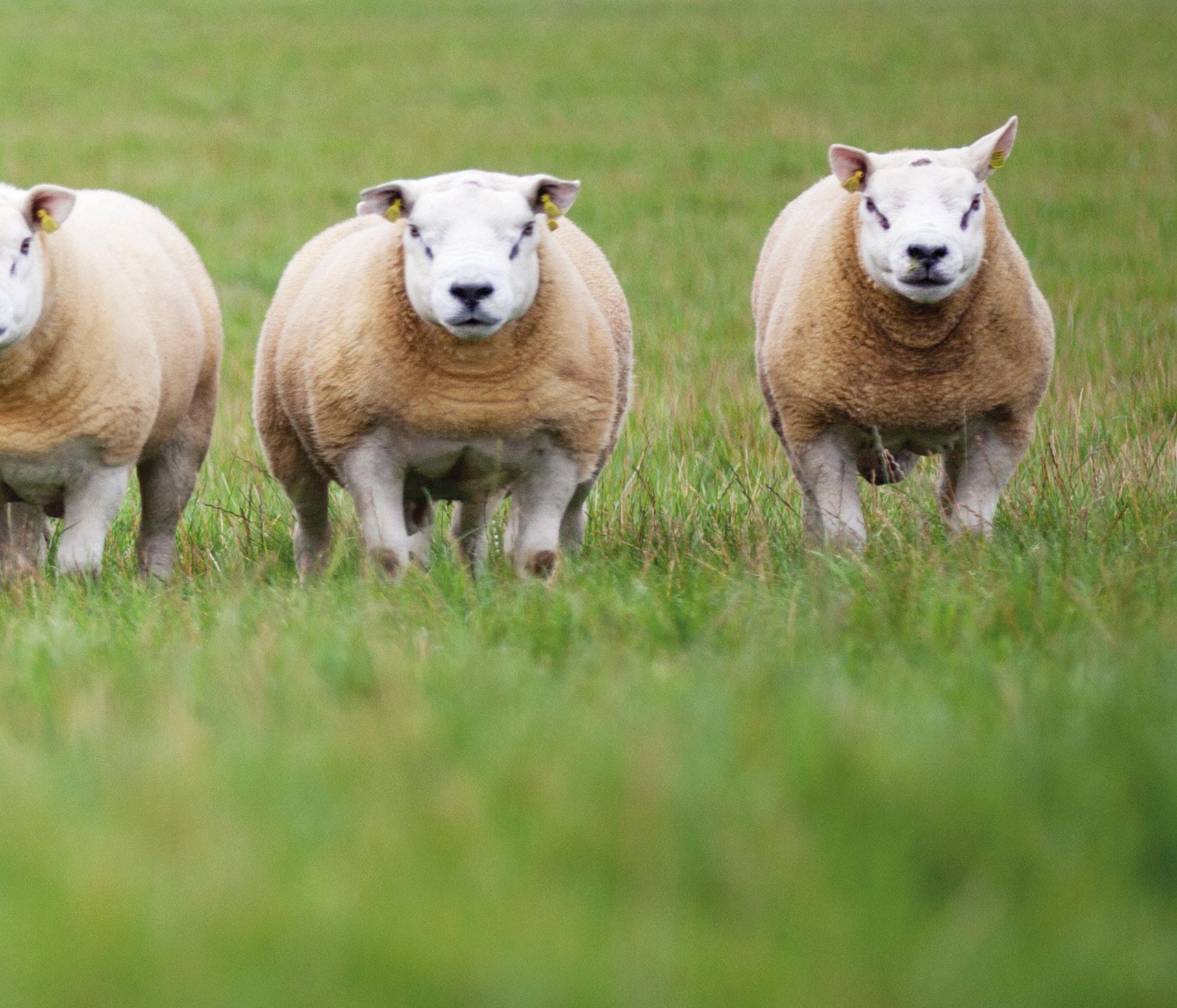
“Meanwhile, just 91 (13.4%) sold at prices of 3000gns or more, demonstrating the broad spectrum of prices achieved at these elite sales which provide opportunities for all commercial breeders to buy rams.”
Up to 1000gns
1100gns to 2900gns
More than 3000gns
Mr Yates added that the Society provided a variety of tools and services to help commercial customers source rams, with the National Sales being an early season sales opportunity open to all.
For the latest Texel sale dates
SCAN HERE
Alongside these National Sales, commercial buyers can also use the Society’s online database, itexel.uk, to find breeders near them or those with animals which meet their specific criteria.
“Using itexel.uk means you can search breeders by location and you can also search animals by their genetic potential, seeking out those animals with the performance traits you need to maximise returns from your flock.
To use iTexel find Texels near you
SCAN HERE
“Whether you are looking for terminal sires to produce fast growing lambs which will finish quickly, or you are seeking rams with maternal genetics to produce milky, prolific replacements, you can find them using itexel.uk,” he added.
On top of this the Society’s network of regional clubs operate a wealth of local sales across the UK, giving buyers every opportunity to source the rams they need with the assurance of quality.
Additionally, commercial buyers can view listings of Texels for sale via the Society’s dedicated portal on sellmylivestock.com, giving another easily accessed way to find the Texels you need to earn premium prices.
To see the latest Texel listings on SellMyLivestock
elcome to the 2024 issue of Primestock, the Texel Society’s commercial publication showcasing the breed at work on commercial farms across the UK.
The shifting agricultural policy landscape in all nations of the UK is, naturally, causing uncertainty for many farmers, leading them to question the best way forward.

However, one thing everyone involved in the UK sheep sector can be certain of is the need for profitable, sustainable sheep businesses producing safe, reliable, sustainable food sources for UK consumers.
And, thanks to the largely extensive nature of UK sheep production, there can be fewer safer, more sustainable foods than British lamb.
In fact, arguably, making UK sheep production profitable is a greater challenge than making it sustainable.
However, thanks to the innovative minds of the first importers of Texels to the UK some 50 years ago, there is a simple way to maximise the value of the lambs your flock produces and hence, give a greater chance of profitability. Use Texels!
Over the last 50 years British Texels have become the backbone of the UK lamb industry, serving as both a highly regarded terminal sire and also an effective maternal breed too.
That success hasn’t happened by chance. Texels are the nation’s favourites because they do what farmers need them to.
Foremost among this is the breed’s unrivalled ability to add value to businesses and, as a result, significantly reduce business risk.
In addition, the breed is adaptable and flexible, fitting in to a myriad of sheep farming systems across hugely varying climatic and environmental conditions in all corners of the UK.
With many producers gaining the benefits from using Texels, can you afford not to? Texels can provide more to your sheep enterprise, supporting you as you plan a positive future for your business, add ing value to your flock, increasing profitability.
SCAN HERE
John Yates Chief Executive #addtexeladdvalue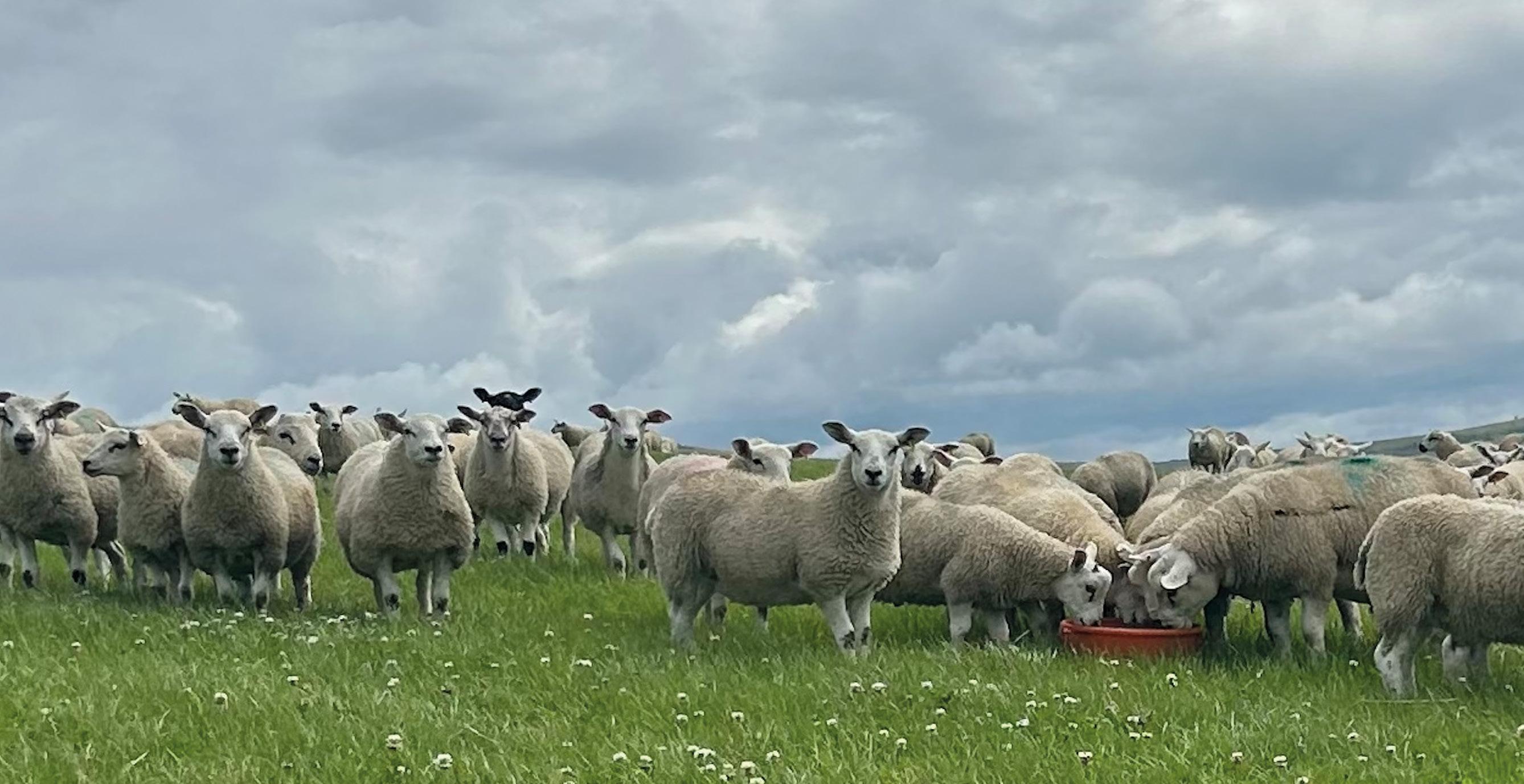
More than 40 years of using Texels has helped drive the Wordie family’s sheep system forward, with the third generation of the family, Nicola, now using the breed as the backbone of their 850-ewe commercial flock.
Farming alongside her father, George, she has recently increased flock size, aiming to boost efficiencies in the system and maximise the use of technology to help improve flock management.
“My grandfather first introduced Texels to the farm when he imported some from the Netherlands back in the 1970s. We’ve been using them ever since and now run a 40-ewe flock to breed our own tups, with stock rams sourced both locally and at Kelso Ram Sale.
Lambing from early February onwards, the flock is split in to three groups, with the pure Texels lambing from 5th February onwards, followed by an early lambing flock of Scotch Mules three weeks later and the final batch of Scotch Mules lambing from 22nd March onwards.
“This helps balance the labour demand through the spring, although we also run a 240-cow suckler herd of which half are spring calving, so there’s plenty to be doing throughout the spring!”
All lambs are finished off grass, with Nicola Wordie selling 95% of them deadweight.
“The breed continues to deliver for us, producing high quality lambs which finish quickly and meet the specification required by our buyers. Every ewe on the farm goes to a Texel ram and I can’t see us changing breed at any point,” she explains.
Aiming for a scanning percentage in excess of 200% to maximise lambs sold this year the flock has scanned at 218%, reflecting the high levels of flock management Nicola implements throughout the year.
“Replacements for the commercial flock are purchased as ewe lambs, with gimmers also bought when necessary to maintain flock numbers. All ewes on the farm are vaccinated against both toxoplasmosis and enzootic abortion, with a clostridial vaccine also used to maintain flock health.
“Worming strategy is based on faecal egg counts, aiming to only treat lambs when necessary, rather than using anthelmintics unnecessarily,” says Nicola.
Strategic use of feed blocks in recent years has also helped maximise lamb numbers, with blocks used during tupping to maximise conception and then dedicated pre-lambing blocks used to help boost colostrum quality and lamb vigour.
“Not that our Texel-sired lambs lack any vigour, but anything we can do to give them

an extra boost is worthwhile, particularly in a high performance flock where every lamb counts.
“We also feed concentrate to twin and triplet carrying ewes from 2-3 weeks pre-lambing, but those carrying singles receive no feed, just having access to blocks. We try and cross foster wherever possible, to minimise the number of orphan lambs we have to manage and maximise the number of ewes rearing two lambs,” she adds.
With 95% of lambs sold deadweight, Nicola says the first draw is usually made 10-11 weeks post-lambing, with lambs receiving no creep feed and all lambs finished off milk and grass.
“Over the last few years, I’ve introduced some technology to the flock to try and improve management, including a Te Pari handling system and the Flockwatch app. The handling system, along with my team of dogs means I can carry out many flock tasks single handed, while the app helps keep track of lamb growth rates and identify poorer performing ewes which can be culled to make way for replacements.
“In addition, we have an automatic milk feeder for the orphan lambs which greatly reduces the labour demand of them, while also improving their growth rates and health,” says Nicola.
“In 2023 we sold more than 1300 lambs to average £122, but with costs continuing to put pressure on margins, maintaining efficiencies is essential. My hope is that by maximising flock health, working hard to keep barren ewe rates low and targeting quick finishing times without creep feeding
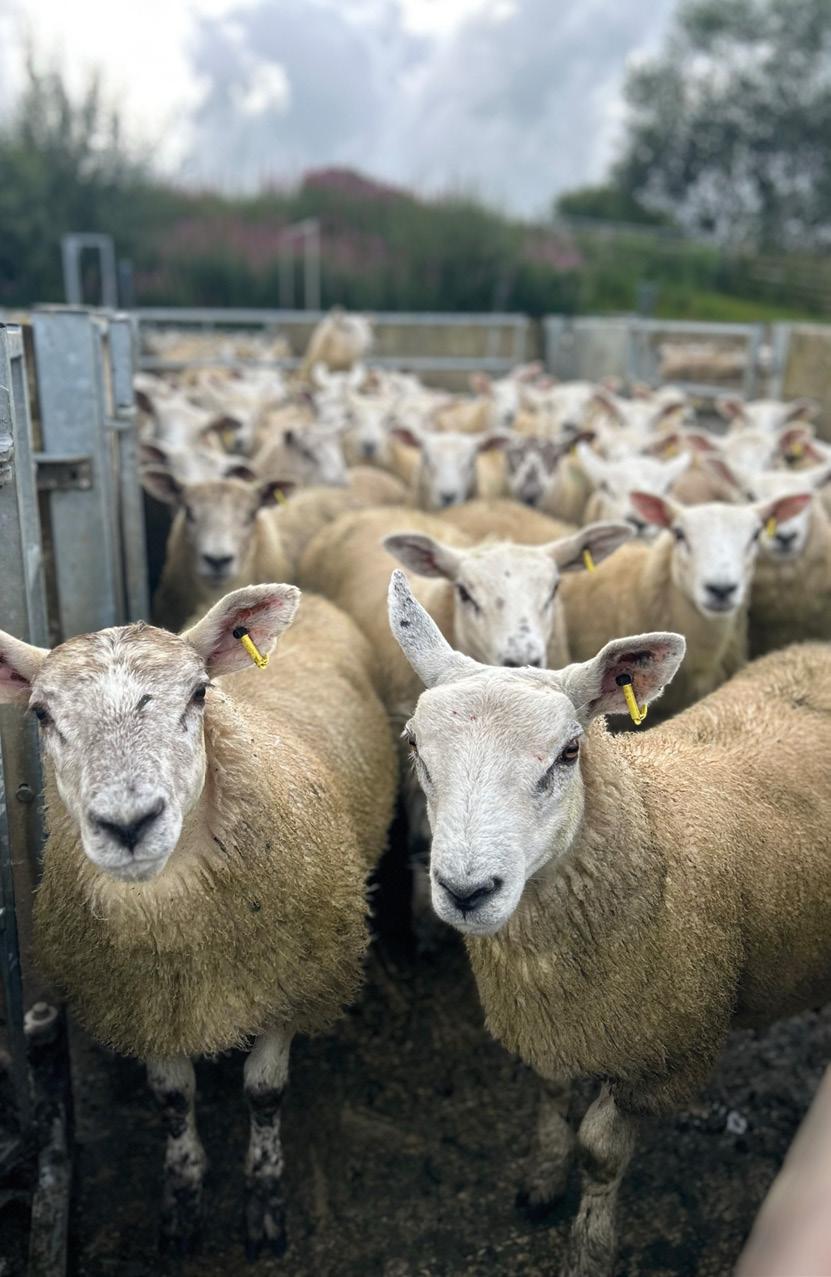
we are able to retain a good margin to allow for reinvestment in the flock and the wider farm.
“I’m conscious this could become harder in the years to come as support payments change post-Brexit, but ultimately everyone needs to eat, so the country needs farmers,” says Nicola who works hard to increase the profile of farming through her social media presence as @livestock_farmher.
“I feel it is vitally important that we show our customers how we farm; the high welfare standards we operate to, the care we take of our livestock and the environment and how British livestock can be part of the climate change solution,” she explains.
The Wordie family, Huntly, Aberdeenshire
• 1400-acre sheep and beef unit
• 850 Scotch Mule ewes
• 240 suckler cows
• 94% of lambs U3L or better
Texels, she believes, will continue to play a big part in the flock at Mains of Cairnborrow, thanks to their ability to deliver year in, year out. “Texel tups across Scotch Mule ewes are working extremely well for us. Lambs are easily born, have plenty of vigour at birth and grow and finish quickly. They’re hitting target grades and weights easily, delivering everything we want of them,” adds Nicola.


Texels have proven themselves a reliable sire breed for Northern-Irish producer David Jardine, with every ewe and ewe lamb in his flock tupped by Texel rams for many years.
“Everything goes to Texel rams and has done for many years, they deliver what we need year in, year out and I can be confident of easily finished lambs which weigh well and earn top prices,” he explains.
Running 550 Suffolk x Mule ewes, David appreciates the hybrid vigour using Texel tups offers and the get up and go the Texel cross lambs have at birth.
“They’re up and looking for milk quickly which is important as I largely farm on my own, with help from my wife and children when available. My brother lends a hand too, but he has a full-time job, so it’s really down to me most of the time.
“Knowing that the lambs are going to get themselves up and going is a big weight off my mind and gives them the best start in life. This is equally vital when it comes to lambing the ewe lambs too, with these all tupped to Texel rams too.
“Lambing the ewe lambs is great for instilling their maternal instinct and the vigour in the Texel lambs is great in this respect,” he adds.
With the main flock of ewes lambing from late February, David houses his flock about
a month ahead of lambing, feeding them high quality grass silage with concentrates fed according to litter size.
“Everything is lambed inside, with ewes and lambs heading out to grass within a day or so of lambing.
“We don’t have the space to keep them inside any longer than that, so having strong lambs and milky ewes is crucial,” says David.
“I offer creep feed to the first 200 lambs, but not the remainder. The aim is to have those first 200 really flying early, so we can start to sell lambs from the last week of May onwards, with those first 200 generally all sold within a five-week period.”
After that David aims to finish most of the remaining lambs off grass and milk alone, with feed introduced towards the autumn if needed and a small number of lambs sold as stores late in the year when grass is tight and it is needed for the ewes.
“Lambs are sold privately on a liveweight basis with the aim of finishing them at
David Jardine, Katesbridge, Northern Ireland
• 550 ewes
• 200 ewe lambs
• 185% scanning
• 180 acres grassland
• 140 finishing cattle

44-50kg. Taking them to these weights is key to maximising their value and ensures a decent return. The Texel cross lambs out of the ewe lambs have been making from £125-150 over the winter of 202324,” he says.
“I also sell between 150 and 200 Texel cross ewe lambs every year to repeat customers locally, with one of these buyers regularly topping local sales with them as shearling ewes, selling for up to £225/head last year.”
David believes keeping his system simple is essential, with replacement females purchased as ewe lambs from local sales. “Buying in good quality ewe lambs is key, as is ensuring a high level of health in the flock. Everything is on the Heptavac P+ system, with every ewe lamb vaccinated for both toxoplasmosis and enzootic abortions when they arrive on the farm.
“I can’t afford for the flock to be hit by an abortion storm, so vaccinating every replacement is key to protecting my investment in them.
“When it comes to ram buying I tend to buy from the same breeders most years, either privately or through local sales. I buy from flocks I know are producing the type of ram I need, those with good strong tops and easy fleshing characteristics, coupled with good legs and feet,” adds David.
‘In any industry there are developments that irrevocably alter the entire landscape of an industry. The introduction and evolution of the Texel breed in UK farming is one such development and it has been proven to have transformed standards.’
What Texel breeders, under the stewardship of the Society, have achieved since the Society’s formation some 50 years ago is nothing short of revolutionary. Society members continue to invest heavily in the breed, both in genetics, but also, via the Society in the latest data driven technologies to keep the breed moving forwards.
As a result of this, the breed remains best placed in the UK sheep industry to take on the latest developments and harness the power of data and genetics to move forwards.
With this in mind, the Society will, this spring, be rolling out Texel specific genomic indexes via its genetic improvement service, texelplus, enhancing the benefits available to commercial sheep farmers from using Texels.


January lambing to hit the early lamb trade has lost popularity among commercial flocks over the last 20 years as feed costs have risen and demand for new season lamb has ebbed as the hogget season has extended.
However, for South Walesbased flockmaster Huw Davies it is a tried and tested system which is yielding good returns, particularly in recent years when the lamb trade has been strong.
“We lamb about 750 of the 1100 strong commercial flock in January, with the first 400 starting on the 8th of January and the next 350 timed to lamb alongside the returns from that first service.
“All of those ewes are synchronised using progesterone sponges and we’re achieving a scanning rate which would average out at about 185% over the years,” he explains.
Admitting that it is a high-cost system, Huw, who farms alongside his wife, Carys, and
his daughter’s partner, Sion Lewis, says it remains the best way of maximising lamb value. “Obviously we have higher feed costs, with ewes being fed both pre- and post-lambing to maximise milk yield and lamb growth and lambs also being creep fed. It does create more work, but shorter days in January mean ewes don’t graze for as long as later in the season, so feeding helps make up for the shortfall.
“Importantly, we can begin selling lambs at 12-14 weeks old and last year we had lambs up to £204/head with others in the high £190s and most would have been making £160-170/head when sold liveweight.
“We’ve been January lambing for years, but only moved to synchronising the ewes about 20-25 years ago. Prior to that we
Huw Davies, Trefaes Fawr, Beulah, Newcastle Emlyn
• 750 acres
• 1100 Texel cross ewes
• 60 suckler cows
• 185% scanning

were tupping naturally, but found that when we went to draw lambs we’d only be drawing a relatively small number each week.

Every lamb is sold liveweight, with strong demand from exporters for the European market.
“With this system we can easily be picking 100-150 lambs a week which means we can get through them quicker, getting the best of the trade before there are large numbers of new season lambs coming forward for sale.”
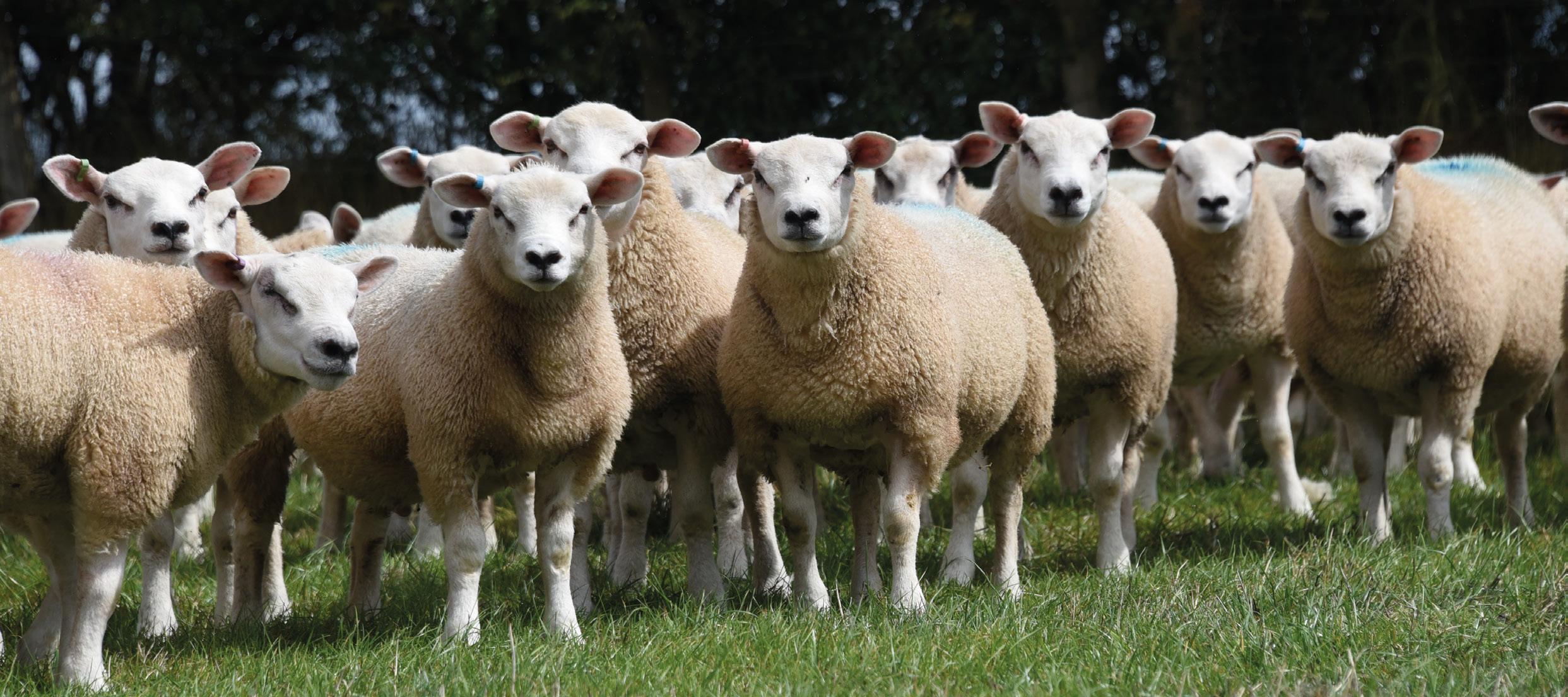
He adds that synchronising ewes also has benefits in terms of labour requirements as it means extra labour only needs to be hired in for short periods of time. “When we were January lambing without synchronisation, we’d only have a few lambing a day, so would nip off to do other jobs while the ewes were quiet. Of course, typically there would be a problematic lambing while we were away and it would result in more work.
“Now, we know we’re going to have a busy period for seven days or so and then we get a break again before the next batch start. It just makes things easier all round from both a sheep and labour management point of view.”
Huw says having the right sheep is also critical for this system, with Texel rams his preferred choice. “Without a doubt Texels are a great fit for our flock. The lambs are quick to their feet, hardy enough to go out to grass within a short time after lambing and will withstand the worst the Welsh weather can throw at them.
“On top of that they grow quickly, respond well to creep feeding and the threequarter Texel lambs are in high demand for their excellent conformation and great killing out percentage,” he explains.”
While having lambs out at grass in January and February may worry some, for Huw it works well, with January often being a kinder month than March. “More often than not we can have some harsh weather coming out of the east during March and early April, whereas January and February may be wetter, but the Texel lambs can stand most weathers and still thrive.”
Selling liveweight at both Welshpool and St Asaph, Huw says a lot of his lambs end up on sale in Continental Europe within just a few days of leaving the farm. “There is a small level of demand from local butchers at both markets, but without doubt the biggest buyers early in the season are exporters.
“They’re willing to pay a premium for top quality lambs, whereas UK retailers tend to continue buying hoggets until there are larger numbers of spring lambs available.”
With most replacement ewes bought-in, Huw favours the same flocks each year, knowing that he’ll get the quality of ewe he requires. “Additionally, I know they’ll have been vaccinated against abortion and will fit straight into our system without any issues.”
The flock’s remaining 350 commercial ewes lamb in March and historically these lambs have been finished later in the season off grass, however, recent years have seen creep feed used for these lambs too, says Huw.
“We switched to creep feeding those lambs a few years ago when the lamb trade started to hold up better through July and August. Again, it adds cost, but it means lambs are sold quicker, leaving more grass for the early-lambing ewes to flush on, helping improve overall flock management. Additionally, buyers seek out our lambs as they know they’ll kill out better having been creep fed.”
Feeding lambs throughout the season means they earn a premium due to better killing out percentages.
Synchronising ewes for lambing means greater numbers of lambs can be drawn for sale earlier in the season.
“I dabbled with Texel rams early in my farming career, but found they didn’t achieve the weights I was aiming for as they lacked length. Nowadays the length is there, but still with the great shape we need and with super growth rates too. There isn’t a breed to touch them.”
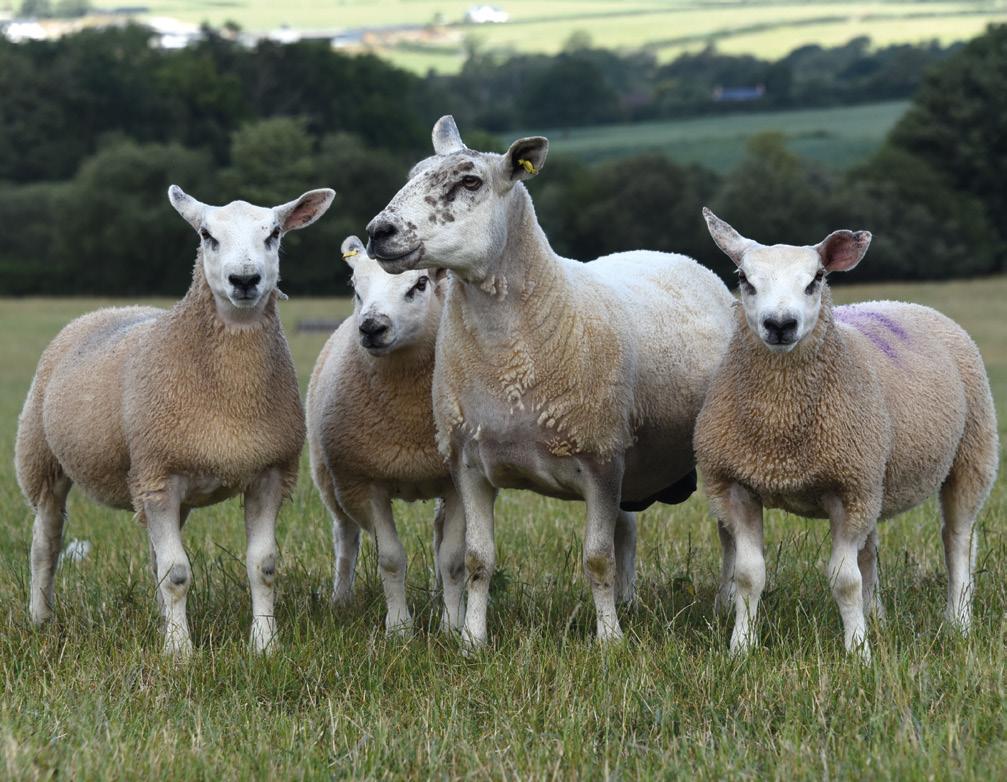 Huw, says the change in the breed over its time in the UK has made it a much more adaptable breed.
Huw, says the change in the breed over its time in the UK has made it a much more adaptable breed.
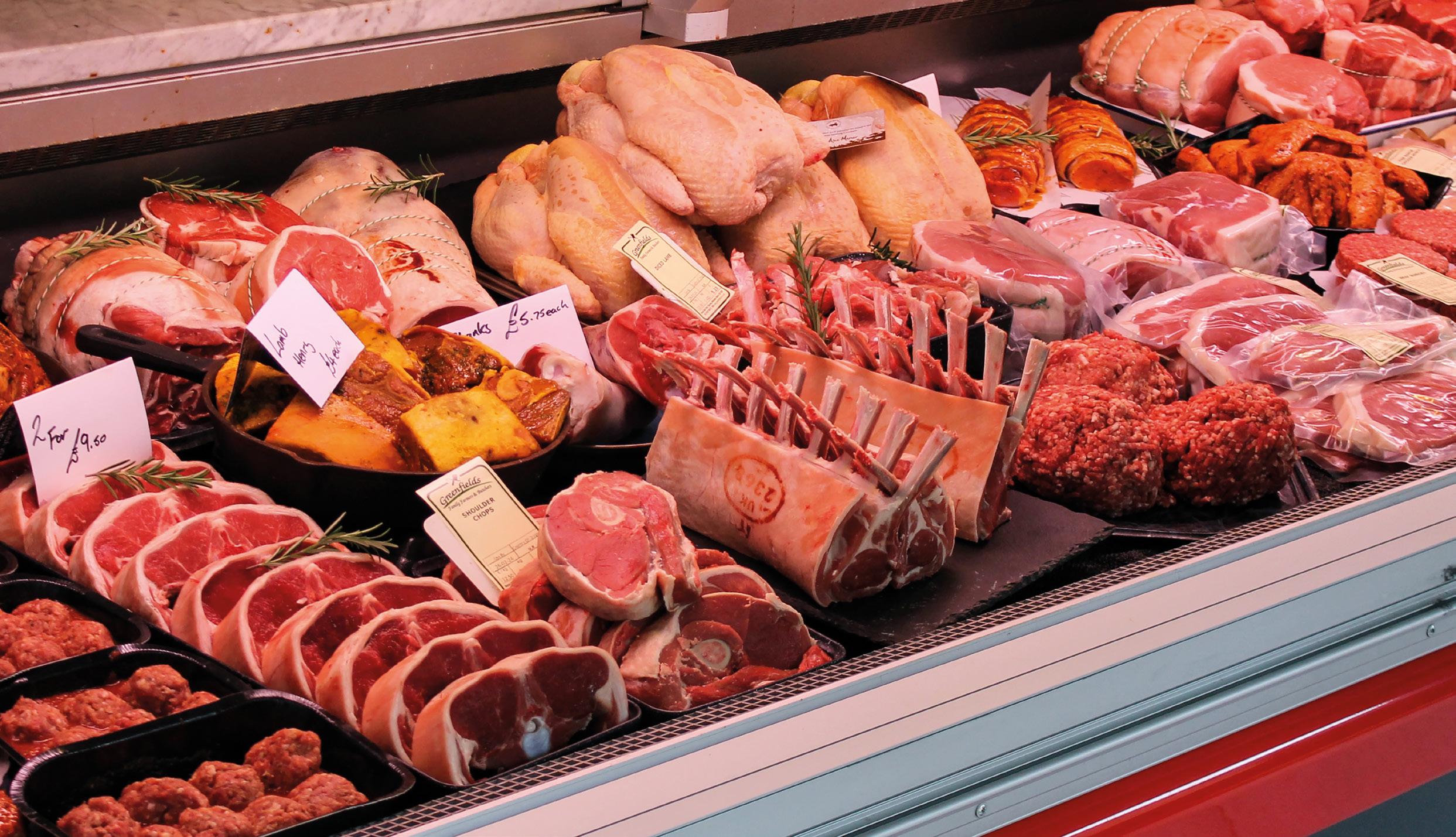
High quality Texel-sired lambs are central to the success of Leicestershire-based farmers and butchers Martin, Mary and Ben Greenfield and family.
Running 1000 Texel x Cheviot Mule ewes put back to Texel rams, the father and son duo have built up their retail and wholesale lamb trade over the last 20 years to the point where now 75% of the lambs they produce go through the on-farm butchery, explains Ben.
“We’re putting about 650 lambs a year through our own shop and into catering customers, with a further 500-550 going out as whole carcasses to a brace of other butchers’ shops.
“There’s no doubt that it is the quality of the carcasses we’re producing which is key to this and the three-quarter Texel lambs fit the bill perfectly,” he explains.
Targetting a carcass weight of 25kg and above Ben says these weights allow flexibility in butchery, giving a wider range of cuts to offer customers and maximising the value that can be extracted from each lamb.
“It’s an interesting contrast, as one of the butchers we supply wants lighter weights and operates a very traditional style of cutting. Whereas both ourselves and the other butcher we supply prefer heavier weights as we have an opportunity to use more modern butchery and extract more from each carcass.
“Lamb rumps, lamb Henrys and shoulder chops are all some of the items we are cutting from these larger carcasses, along with traditional cuts such as Barnsley chops and racks of lamb,” says Ben.
Texel-sired lambs offer flexibility when butchering, due to their high lean meat yield, says Ben Greenfield.
Martin and Ben Greenfield, Norton Barn Farm, Twycross, Atherstone, Leicestershire
• 1000-ewe flock
• 10 lambs/week through on-farm butchery
• 185% scanning rate
• £140/lamb all year round
• 25-30kg carcass weight
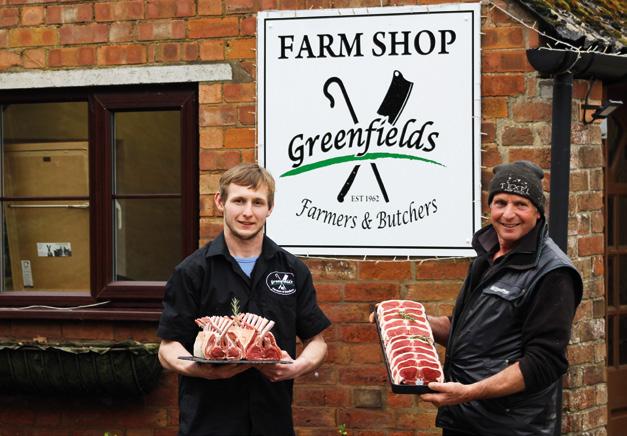
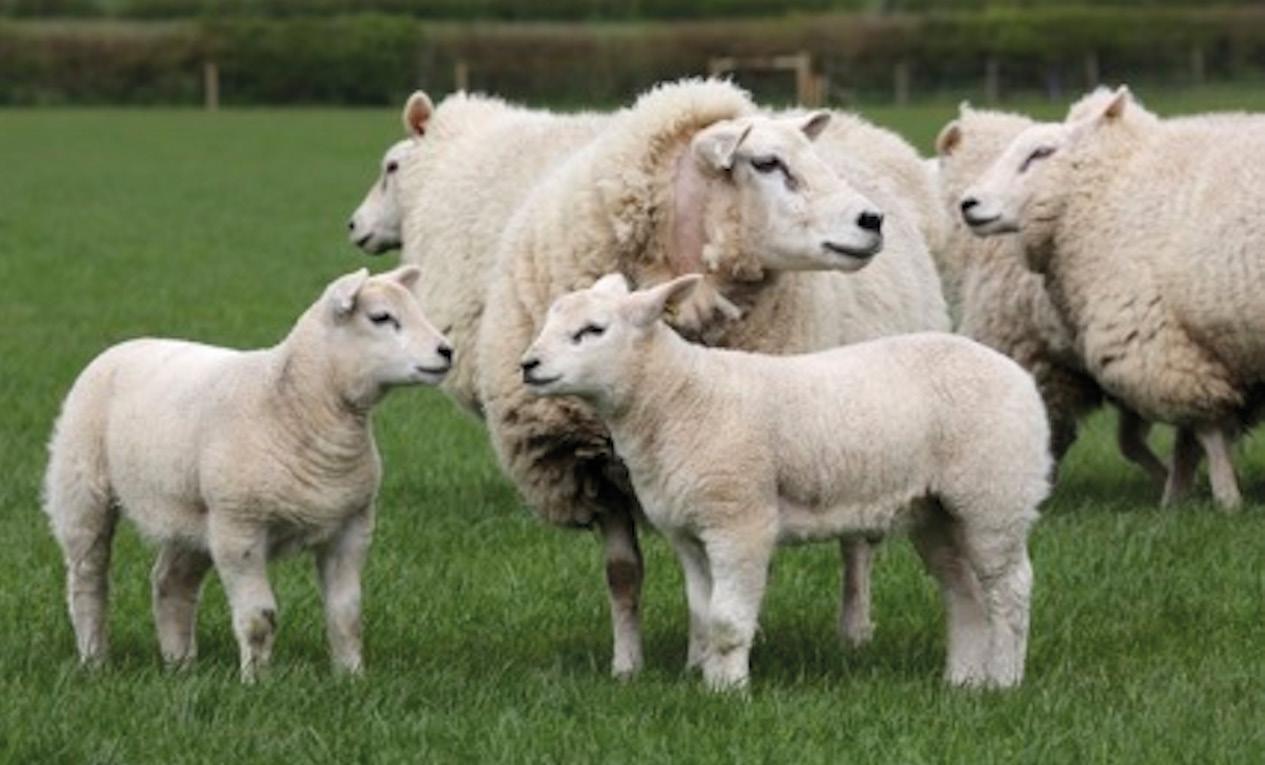
“We can get 10-11 lamb rumps from a leg of lamb and still have the shank and other cuts from it too. Working closely with the pubs we supply means we can tailor our cutting to the portion size that fits the price they’re willing to pay.”
Keen to showcase the quality of the meat they produce, but also ensure a consistent eating experience every carcass is hung for a week before cutting, helping maximise both flavour and tenderness in the lamb.
“I pick the lambs on a Monday, they’re slaughtered on Tuesday and back here in the chiller on Wednesday. We then cut them the following Wednesday for selling over the Thursday, Friday and Saturday when the shop is open.
“We have rock salt in all the chillers to help keep the moisture levels down and also have a dry ager in the shop which has seen high demand from customers for 20-day dry aged lamb loins. Again, it’s about doing something different and adding value.
“Flexibility is key and with the larger carcasses there can be issues with the size of some of the loins and chops when it comes to pricing them. However, I look at it from a whole carcass aspect.
“If we can extract value from every part of the carcass then we can offer it all at a reasonable price. Carcass balance is about both using every part of it and earning what we need to from it. So, we can be flexible on pricing some parts if we’ve maximised the value of others.”
An extended range of ready to cook products is also helping serve the expanding customer base which developed rapidly during the Covid-19 pandemic.
“We picked up a lot of trade during 2020-21 and while it has dropped back a little, we’ve leapfrogged a couple of years in terms of business growth which has been great.
“Developing new, ready to cook products has helped retain some of those customers. Developments such as lamb truffles add both variety and convenience to our offering and add significant value too. They use the same amount of mince as a burger, a reasonably cheap filling, but can be sold for more than twice as much as a burger.”
But, keeping up the quality is still key in these products, he explains. “While they are a useful way to add value, we don’t use them as a way to use up poor quality meat. We ensure the mince we use is top quality, which is easier with our Texel crosses as the fat levels aren’t as high as in some other breeds.
“We’re careful to make sure any trim that goes into the mince is the best it can be. That ensures customers come back repeatedly as they’re getting a product they enjoy rather than one full of fat which disappears once they cook it,” he adds.
Flock management is tailored to the needs of the butchery which now offers homereared pork as well as local beef and a range of other products, with the flock lambing in two batches, one starting in the third week of February and the other in April, explains Martin.
“The early lambs are creep fed to ensure we are able to switch to new season lamb in mid-May, but we don’t push them hard with creep feed. Previously, when we were selling most of our lambs through markets we would have creep fed more heavily to get them away quickly, but now we manage them more steadily to match demand from the butchery.
“Meanwhile, the April lambs are run at grass and finished off herbal leys during


the autumn before moving on to stubble turnips over the winter and following spring. With the Texel’s ability to remain lean even at heavier weights we have no trouble sticking with hoggets until later in spring,” says Martin.
“We’re aiming to finish most lambs off forage alone and have halved the amount of creep we feed over recent years, making the most of grazed grass and including chicory and plantain in most of our grassland.
“Selling through the butchery adds stability to the farm, with every lamb sold from the farm to the butchery going in at the same price all year round. That consistent price is great for both businesses and ensures we can plan ahead on both fronts,” he adds.Ready to cook products, such as lamb truffles are a growing part of the range for the Greenfields.
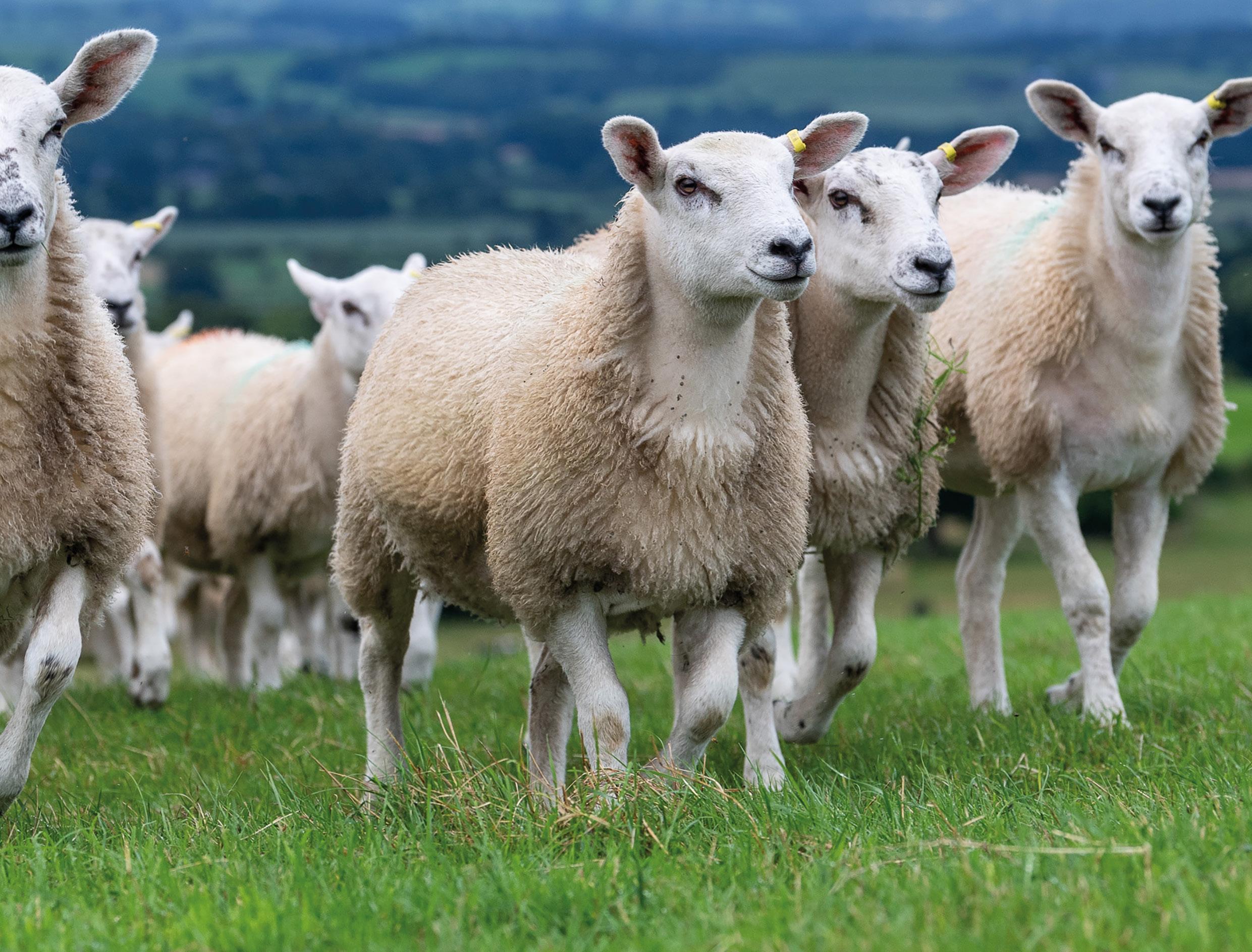
85%
Texel lambs regularly earn up to 25% premiums over live market averages **
of Texel sired lambs are ‘in spec’ *
25%
Texels are adding £23.5m more to the industry every year through genetic improvement. ***
High index Texel rams add more than £690 to their slaughter progeny ****
Texel sales take place at more than 20 markets across the UK. Scan here to find one near you